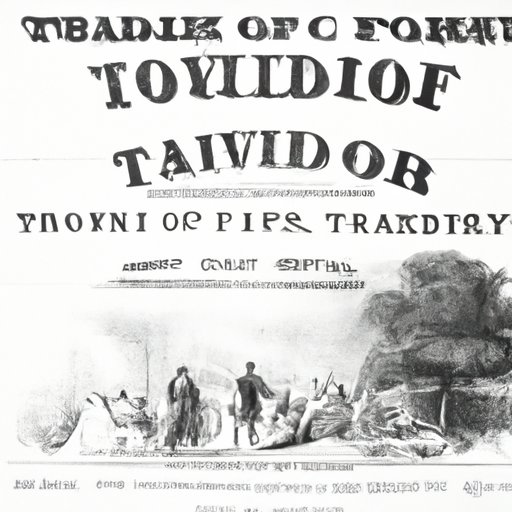Introduction
The American Civil War (1861-1865) was a bitter conflict between the Union forces of the North and the Confederate forces of the South that resulted in over 600,000 deaths. The financial burden of this war was immense, with the Union spending around $2.7 billion and the Confederacy spending around $1.3 billion. This article explores how the South was able to finance such a costly war effort.

Analysis of the Confederate Taxation System
The Confederate government implemented a variety of taxes during the Civil War. These included taxes on imports, exports, bank notes, land, slaves, whiskey, and tobacco. The amount of revenue generated from these taxes was relatively small, only accounting for around 10% of total Confederate expenditures during the war.
Despite the small amount of revenue generated from taxation, it did play an important role in helping to finance the war effort. According to historian Mark Grimsley, “Confederate taxation was not a major factor in the Confederate war effort, but it was a necessary one.”
State Bond Issuance and Debt Financing in the Confederacy
The Confederacy also relied heavily on state bond issuances to finance the war. These bonds were issued by the individual states and sold to investors, both domestic and foreign, who expected to be paid interest and principal at maturity. This form of financing provided a steady stream of income to the Confederate government, which helped to fund its war effort.
However, there were some drawbacks to this form of financing. As the war dragged on and the Confederacy was unable to pay back its debts, many investors began to lose faith in the Confederate government and refused to purchase its bonds. This caused a sharp decline in the availability of funds for the Confederate government, making it even more difficult to finance the war.
Cotton as a Source of Revenue for the South
Cotton was a major source of revenue for the South during the Civil War. The Confederacy had a monopoly on the production of cotton, which allowed it to sell the commodity at high prices on the international market. This provided the Confederate government with much needed funds to finance its war effort.
However, the reliance on cotton as a source of revenue was not without its drawbacks. As the war dragged on, the Union naval blockade of Southern ports made it difficult for the Confederates to export their cotton, reducing the amount of revenue they could generate.

Confederate Currency and its Impact on Financing the War
The Confederacy also relied heavily on its own currency, known as the Confederate dollar, to finance the war effort. This currency was backed by the promise of future revenue from taxes and other sources, but the value of the currency quickly declined due to rampant inflation. This made it difficult for the Confederate government to finance its war effort, as it was unable to borrow money or raise taxes due to the devaluation of its currency.
According to historian James McPherson, “the Confederate dollar became almost worthless, contributing significantly to the Confederate defeat.”

International Loans and Support to the Confederates
The Confederacy also attempted to secure international loans from countries such as France and Britain in order to finance its war effort. Although these loans were not successful, they did provide some level of support to the Confederacy and helped to finance its war effort.
However, the lack of success in securing international loans further weakened the Confederate government’s ability to finance the war, as it was unable to borrow money from foreign sources.
The Role of Private Contributions to the South’s War Effort
The Confederacy also relied on private contributions to help finance its war effort. These private donations came from individuals, businesses, and organizations in the South who wanted to support the Confederate cause. While these private contributions were not enough to make a significant impact on the Confederate war effort, they did provide some level of financial support.
According to historian Gary Gallagher, “private contributions played an important role in sustaining the Confederate war effort and morale in the face of mounting losses and dwindling resources.”
Conclusion
The Confederacy faced a daunting task in financing its war effort during the Civil War. It relied on a variety of strategies, including taxation, state bond issuances, cotton production, Confederate currency, international loans, and private contributions. Each of these strategies had its own benefits and drawbacks, but ultimately the Confederacy was unable to generate enough revenue to sustain its war effort.
The lack of adequate financing ultimately led to the Confederate defeat in the Civil War. This article has explored how the South went about financing its war effort, and the impact these strategies had on the outcome of the war.
(Note: Is this article not meeting your expectations? Do you have knowledge or insights to share? Unlock new opportunities and expand your reach by joining our authors team. Click Registration to join us and share your expertise with our readers.)
